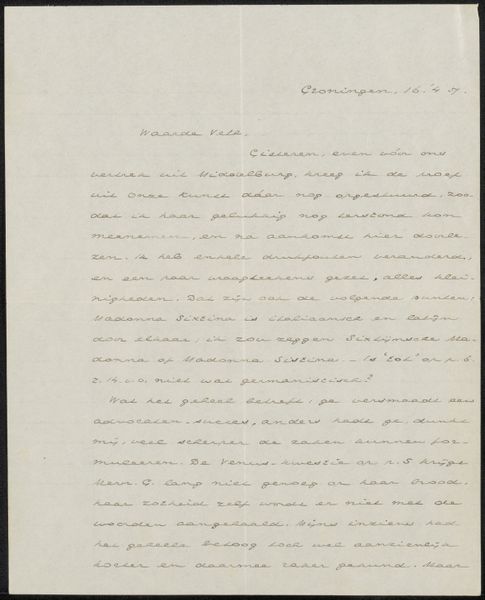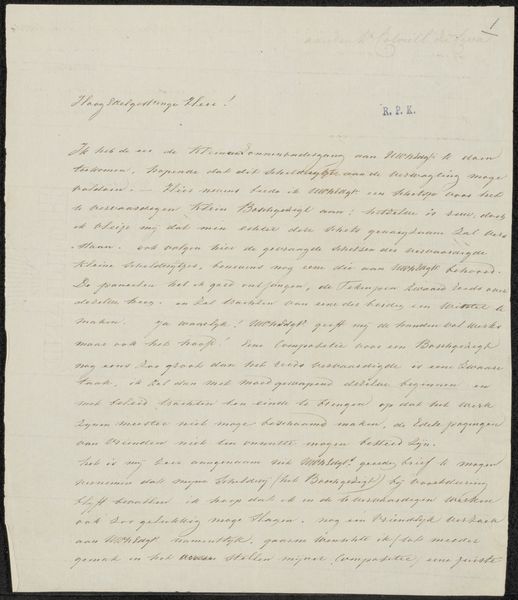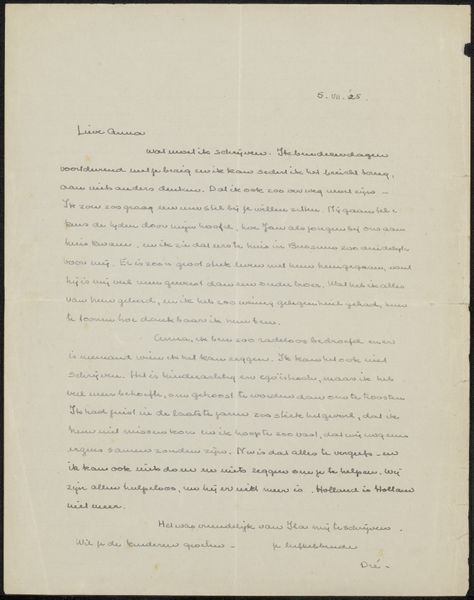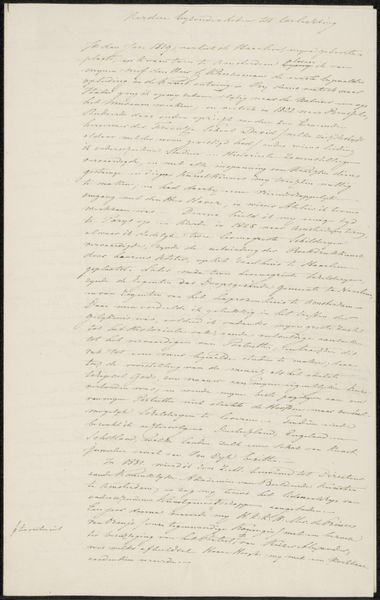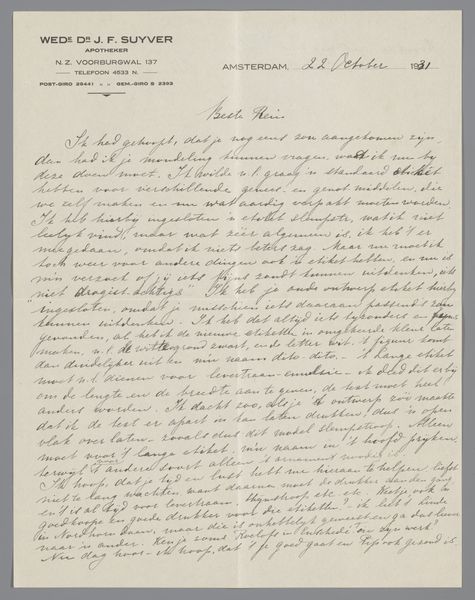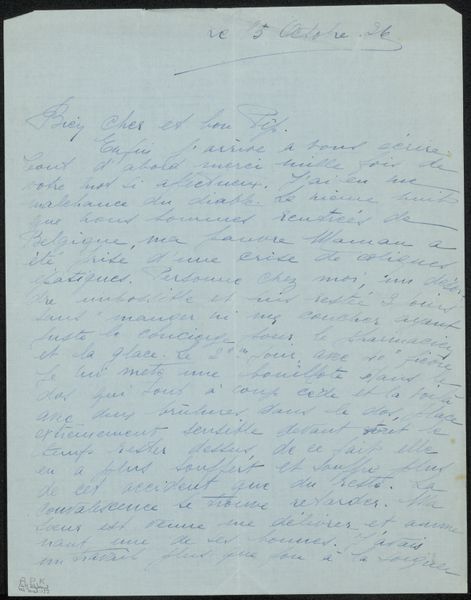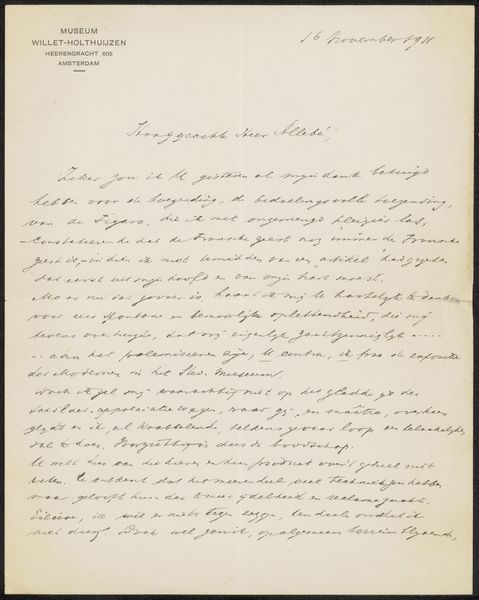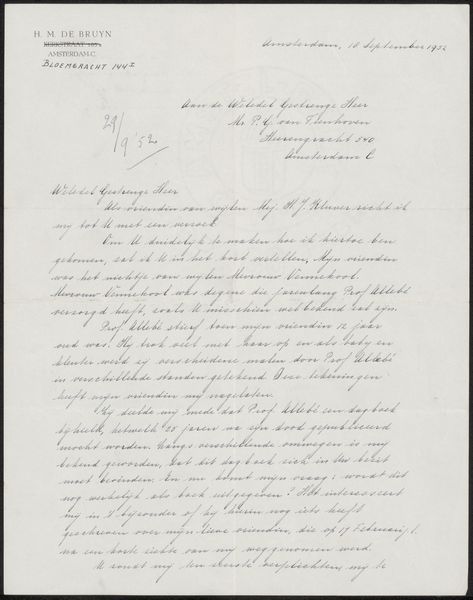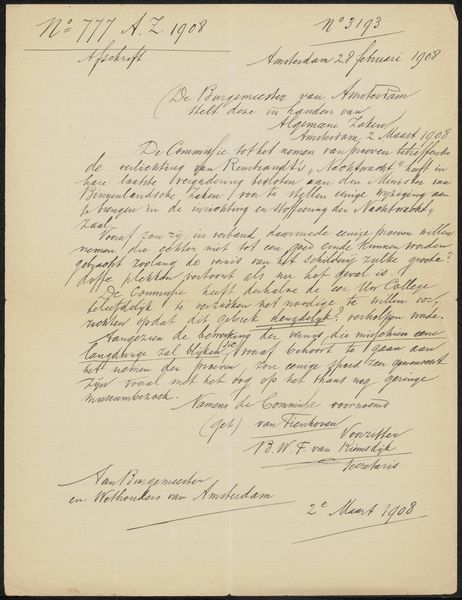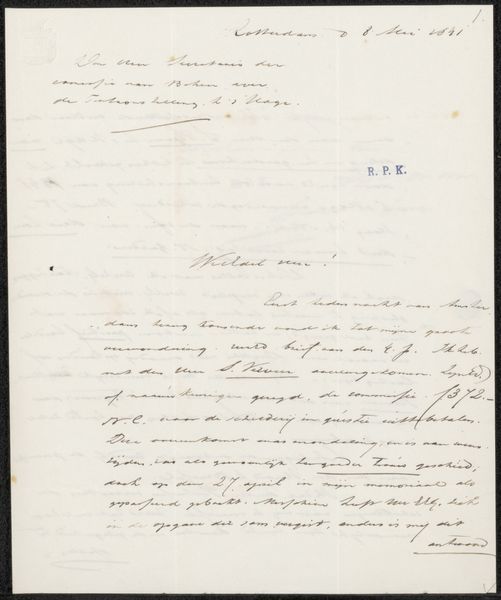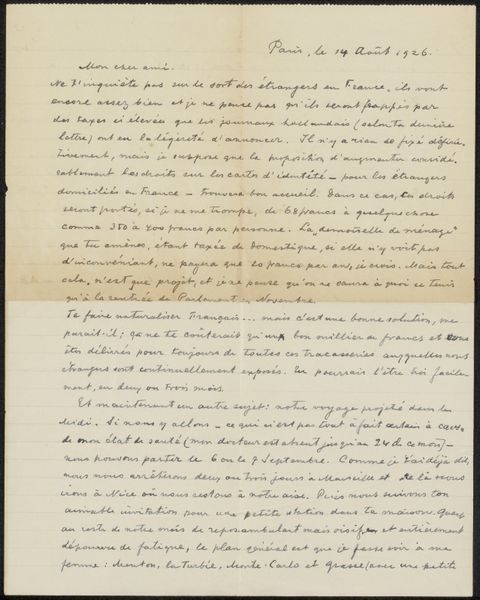
drawing, paper, ink, pen
#
portrait
#
drawing
#
paper
#
ink
#
pen
Copyright: Rijks Museum: Open Domain
Curator: This piece is a handwritten letter, "Brief aan Jan Veth," possibly from 1895, penned by Johan Huizinga. The medium appears to be ink on paper. Editor: Immediately striking, there's an intimate feel to this. It looks like something very personal, almost like eavesdropping on a private moment. Curator: Absolutely. Given Huizinga's scholarship—his focus on cultural history and play—one has to wonder about the materiality of writing itself, how the physical act of crafting this letter shaped his thinking. We’re seeing labor distilled here, not in fields or factories, but intellectual labor transferred onto paper. Editor: And situated within its own social fabric! Consider the addressee, Jan Veth, himself a notable figure in the art world. This isn’t just a casual note; it's potentially part of a larger intellectual exchange within the late 19th-century art scene. We might also examine this through the lens of queer studies—letters often served as crucial communication for those on the margins. Curator: The choice of ink and paper emphasizes a certain permanence, doesn't it? The labor, the means of production itself, become part of this relationship. Consider the contrast between this letter and the ephemeral nature of today's digital communications. Editor: This raises critical questions about archive, legacy, and the very nature of historical interpretation. How will future generations access and interpret our communications when so much exists only in digital form? This tangible letter becomes a defiant object. Curator: The contrast helps bring it to focus as more than just text. Editor: Precisely, a tangible symbol—the materiality encoding deeper, more resonant messages. Thank you!
Comments
No comments
Be the first to comment and join the conversation on the ultimate creative platform.

